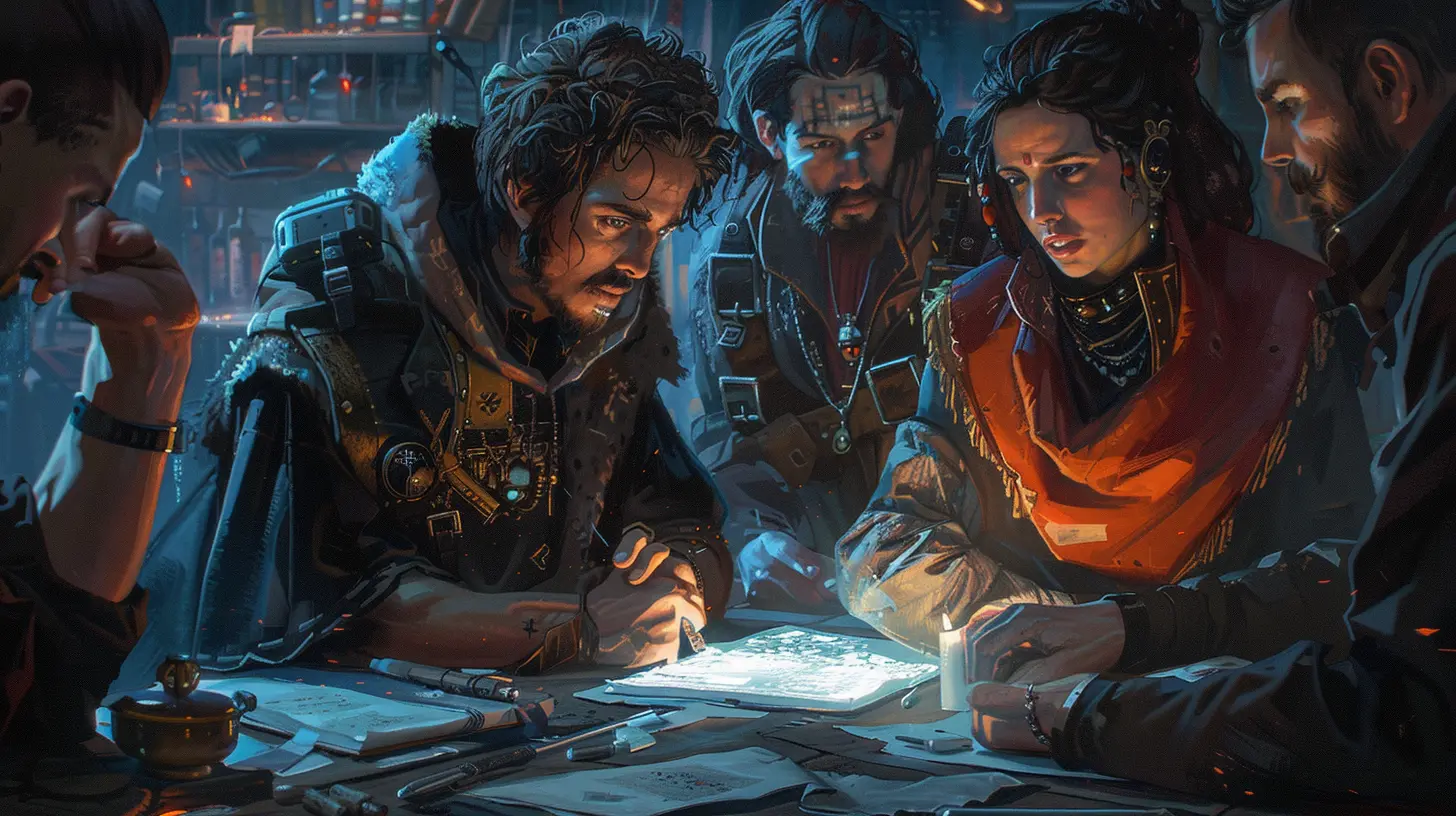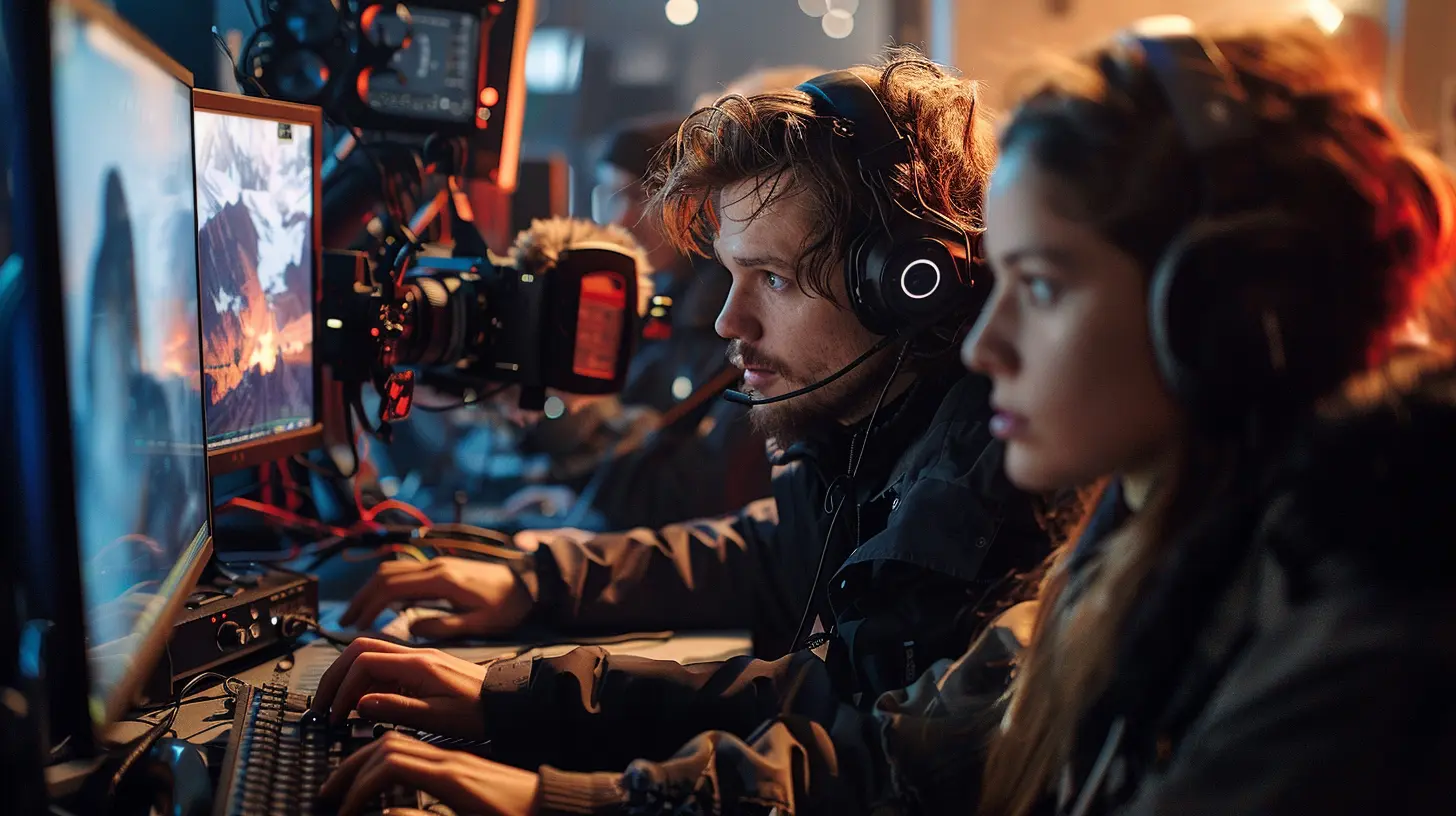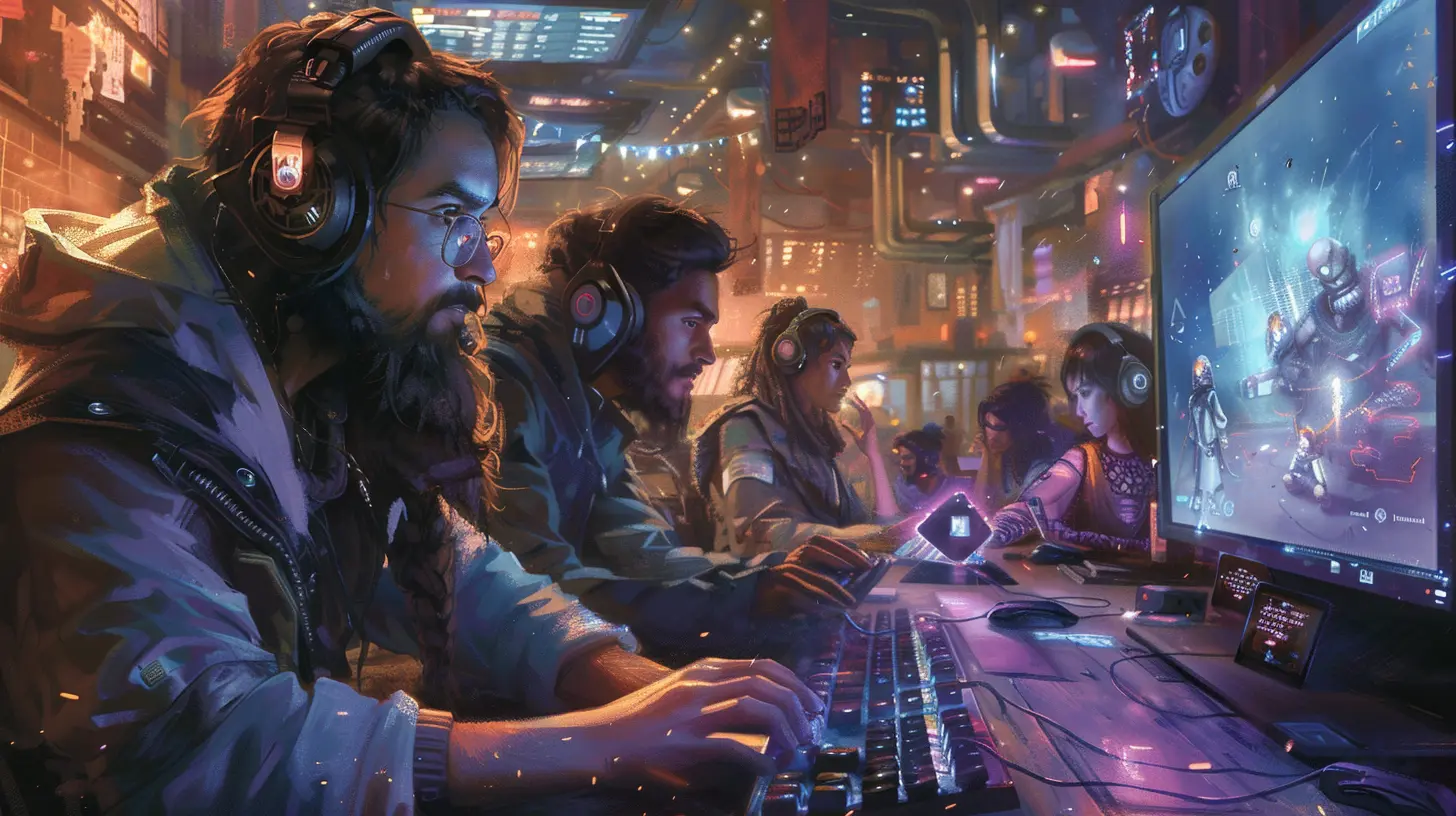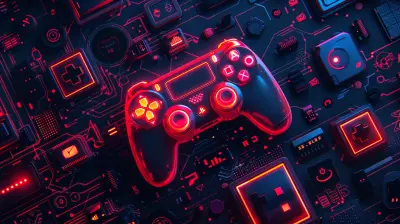The Creative Process: Game Writers and Voice Actors Collaborating
1 July 2025
Ever wonder how your favorite game characters come to life with such vivid personalities and emotional depth? It’s not just fancy graphics or cool gameplay mechanics. It’s the magic that happens when game writers and voice actors come together to breathe life into a story. Their collaboration is like a symphony—each player has a unique role, but together, they create something unforgettable.
Let’s dive into the fascinating behind-the-scenes world where words meet voices, where storylines meet emotions, and where digital worlds become human.
Table of Contents
1. The Importance of Storytelling in Games2. What Game Writers Actually Do
3. Voice Actors: Bringing Words to Life
4. Why Collaboration is Key
5. Behind the Scenes: The Creative Workflow
6. Real-Time Script Adjustments
7. The Role of Voice Directors
8. Challenges in the Creative Process
9. Success Stories: Games That Nailed the Collaboration
10. The Future: AI Voices vs Human Emotion
11. Final Thoughts

The Importance of Storytelling in Games
Let’s face it—no matter how visually stunning a game is, if the story falls flat, players lose interest fast. Storytelling is the emotional backbone of any great game. Whether it’s a dramatic narrative or a quirky side quest, it’s the writing and the performance that make it memorable.It’s not just about what’s said—it’s about how it’s said. And that’s where the magic of collaboration truly shines.
What Game Writers Actually Do
You might think game writers just write dialogue. Nope. Their job goes way beyond that.They build entire worlds from scratch—characters, lore, backstories, dialogue trees, and even branching narrative paths. Every piece of text in a game, from witty one-liners to heart-wrenching monologues, starts with a writer.
Imagine being the architect of a virtual universe. That’s what they do.
Tasks of Game Writers:
- Develop plot and narrative arcs- Write scripts and dialogue
- Create lore and in-game texts
- Collaborate with designers for storytelling mechanics
- Revise scripts based on gameplay needs
Writers play a huge role in determining the tone and emotional journey of the game. But without the right voice behind those words, the story can fall flat.
Voice Actors: Bringing Words to Life
Think about that one character you can’t forget. Maybe it’s Geralt from The Witcher or Ellie from The Last of Us. What made them stick in your head? It’s not just what they said—it’s how they said it. That’s the voice actor’s superpower.Voice actors don’t just read scripts—they perform them. They bring emotion, nuance, personality, and rhythm. They turn dialogue into drama.
Great voice acting can make a character feel alive. Bad voice acting? That can completely break immersion.
Why Collaboration is Key
Game writers and voice actors aren’t working in isolation. Their partnership is essential to creating believable, relatable characters.Imagine a game writer pens an emotional scene meant to make players cry—but the delivery is monotone or offbeat. It ruins the moment. On the flip side, a voice actor might discover an emotional depth in the dialogue that the writer didn’t even consider.
When these two creative minds work together, the results can be magical.
Behind the Scenes: The Creative Workflow
So, how does this collaboration actually work?Step 1: Script Development
It starts with the game writer crafting the scene: the setting, character motivations, tone, and dialogue. At this stage, the writer might already be thinking about how a line should be delivered.Step 2: Table Reads
Before jumping into the recording booth, writers and voice actors often do table reads—basically, reading the script out loud together. This helps catch awkward lines or inconsistent dialogue.Step 3: Voice Direction Begins
Now comes the recording session. The voice actor is guided by a voice director (more on them later). The writer is often present to provide context or tweak lines on the fly.Step 4: Iteration and Feedback
After recording, the team reviews the performance. If something doesn’t feel right, they re-record or rewrite. It’s a dynamic process of trial and error.Real-Time Script Adjustments
Here’s where the collaboration gets spicy.During a recording session, a line might not sound right. Maybe it’s too wordy, or maybe it just doesn’t feel natural. The actor might say, “Hey, what if I tweak this line a bit?” And the writer, rather than clinging to the original script, might say, “Yeah, let’s try it!”
This kind of real-time adjustment is pure gold. It’s where authenticity is born.
It’s like cooking together instead of following a recipe step by step. You taste, adjust, and spice it up till it’s just right.
The Role of Voice Directors
Voice directors are the unsung heroes in this creative process. They’re the bridge between the writer’s intent and the actor’s performance.They:
- Guide tone and emotion
- Ensure consistency across scenes
- Interpret notes from writers and designers
- Keep the actor aligned with the game’s vision
Without them, the whole project risks falling out of sync. They know when to say, “Let’s do another take,” or “Try it with more urgency.”
Challenges in the Creative Process
Like any creative collaboration, it’s not all smooth sailing.Common Challenges:
- Time constraints—tight deadlines mean less time for refinement- Miscommunications—intent vs interpretation can differ wildly
- Continuity errors—especially in branching narratives
- Cultural nuances—sometimes a line sounds fine in text but doesn’t translate well when spoken
The solution? Open communication and flexibility. The best teams understand that creative work is messy, but also magical.
Success Stories: Games That Nailed the Collaboration
Let’s highlight a few games where this collaboration truly hit a high note.The Last of Us (Naughty Dog)
Writers Neil Druckmann and Halley Gross worked closely with Troy Baker (Joel) and Ashley Johnson (Ellie). The result? A deeply emotional narrative with performances that feel heartbreakingly real.Mass Effect Series (BioWare)
Game writers built a sprawling universe, but it was the stellar voice acting (Jennifer Hale as FemShep, anyone?) that gave each choice emotional weight.Red Dead Redemption 2 (Rockstar Games)
This game is a masterclass in immersive storytelling. Writer-led scripts were elevated by nuanced performances, especially Roger Clark’s portrayal of Arthur Morgan.Each of these titles had one thing in common: strong synergy between the written word and vocal performance.
The Future: AI Voices vs Human Emotion
With the rise of AI, synthetic voices are becoming more realistic. But here's the million-dollar question: Can they replace human emotion?Sure, AI can mimic tone and cadence. But it can’t feel. It can’t ad-lib or suggest script rewrites. It can’t catch emotional subtext or add a sigh that wasn’t written but changes the whole meaning of a line.
While AI might be useful for minor characters or background chatter, the heart of storytelling—those key emotional beats—still belongs to real human voices.
Honestly, do we really want a love confession voiced by a robot?
Final Thoughts
Gaming is no longer just about competition or high scores. It’s about experience. It’s about stepping into another world and feeling every twist and turn of the story. And that experience is sculpted by the powerful partnership between game writers and voice actors.When done right, this collaboration creates characters we cry for, laugh with, and remember for years. It’s where creativity meets craft, and the result is pure storytelling magic.
So next time you feel goosebumps during a cutscene, remember—it wasn’t just the script or the voice. It was the beautiful harmony between them.
all images in this post were generated using AI tools
Category:
Voice Acting In GamesAuthor:

Tayla Warner
Discussion
rate this article
2 comments
Abram McGovern
Game writers and voice actors: the ultimate duo! One crafts epic tales while the other tries to pronounce ‘extranormality’ without breaking into giggles. Together, they create magic (and occasional tongue twisters)!
October 1, 2025 at 4:37 AM

Tayla Warner
Absolutely! The synergy between writers and voice actors transforms narratives into immersive experiences, blending artistry and humor in unforgettable ways.
Zevan McNulty
What a fantastic insight into collaboration! Game writers and voice actors truly bring stories to life together.
July 4, 2025 at 4:04 AM

Tayla Warner
Thank you! I'm glad you found the article insightful. The synergy between writers and voice actors is indeed vital in bringing stories to life!


